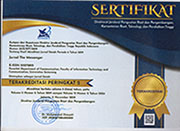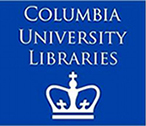Unveiling Social Gratifications Sought and Obtained from Social Media Utilization
Abstract
Going by the proposition of the Uses and Gratifications Theory (UGT), people are motivated to use media by various psychological factors and for obtaining different forms of gratifications. However, as social media continue to play an essential role in shaping the sociability and bridging social connectivity and interactions among its users, therefore, this study seeks to incorporate social influence and social interactions as the social gratification sought in social media utilization, as well as both bonding and bridging social capital as social gratification obtained from social media utilization. An online survey was conducted among 400 users of Instagram in Nigeria. The data analyzed with PLS-SEM revealed that social influence and social interaction significantly motivate social media utilization. Also, social media utilization is significantly associated with bonding and bridging social capital. Impliedly, this study shows that social media is a social and networking tool which is stimulated by social factors and for achieving social purposes such as getting help, support and community engagements.
Keywords
Full Text:
PDFReferences
Adler, P. S., & Kwon, S.-W. (2002). Social Capital: Prospects for a New Concept. The Academy of Management Review, 27(1), 17 42.
Appel, L., Dadlani, P., Dwyer, M., Hampton, K., Kitzie, V., Matni, Z. A., Moore, P., & Teodoro, R. (2014). Testing the validity of social Capital Measures in the study of information and communication technologies. Information, Communication & Society, 17(4), 398 416.
Arikewuyo, A. O., Efe- –zad, B., & Lasisi, T. (2019). Erotic use of Social Media Pornography in Gratifying Romantic Relationship Desires. The Spanish Journal of Psychology, 1(2), 1 20.
Arikewuyo, A. O., Efe- –zad, B., & Owolabi, A. (2020). I U : A Semiotic Analysis of Romantic Relationship Bitmojis on Social Media. In It Happened on Tinder: Reflections and Studies on Internet-Infused Dating (pp. 134 144). Institute of Network Cultures. https://www.researchgate.net/publication/338178515_I_U _A_SEMIOTIC_ANALYSIS_OF_ROMANTIC_RELATIONSHIP_BITMOJIS_ON_SOCIAL_MEDIA
Arikewuyo, A. O., Eluwole, K. K., & Ozad, B. (2020). Influence of Lack of Trust on Romantic Relationship Problems: The Mediating Role of Partner Cell Phone Snooping. Psychological Reports, 12(10), 1 10.
Arikewuyo, A. O., Ozad, B., & Saidu, A. (2018). Use of Social Media in Establishing Virtual Relationship among select University Students. Novena Journal of Communication, 6.
Bagozzi, R. P., Dholakia, U. M., & Pearo, L. R. K. (2007). Antecedents and Consequences of Online Social Interactions. Media Psychology, 9(1), 77 114.
Campbell, S. W., & Kwak, N. (2010). Mobile communication and social capital. New Media & Society, 12(3), 435 451.
Cheung, M. K. C., Chiu, P. Y., & Lee, M. K. O. (2010). Online Social Networks: Why Do Students Use Facebook? Computers in Human Behaviour, 27(4), 1337 1343.
Dewan, S., & Ramaprasad, J. (2014). Social Media, Traditional Media, and Music Sales. MIS Quarterly, 38(1), 101 121.
Donath, J., & Boyd, D. (2004). Public displays of connection. Bt Technology Journal, 22(4), 71 82.
Dunne, ., Lawlor, M. A., & Rowley, J. (2010). Young People s Use of Online Social Networking Sites A Uses and Gratifications Perspective. Journal of Research in Interactive Marketing, 4(1), 46 58.
Eggers, F., Hatak, I., Kraus, S., & Niemand, T. (2017). Technologies That Support Marketing and Market Development in SMEs €” Evidence from Social Networks. Journal of Small Business Management, 55(2), 270 302.
Ellison, N. B., Steinfield, C., & Lampe, C. (2007). The benefits of Facebook Friends: social capital and college students use of online social network sites. Journal of Computer-Mediated Communication, 12, 1143 1168.
Ellison, N. B., Steinfield, C., & Lampe, C. (2011). Connection Strategies: Social Capital Implications of Facebook-Enabled Communication Practices. New Media & Society, 13(6), 873 892. https://doi.org/10.1177/1461444810385389
Fitrianti, A., Febriana, K. A., & Ersyad, F. A. (2020). Personal branding Cino Fajrin through Instragram. Jurnal The Messenger, 12(1), 74 83.
Geber, S., Scherer, H., & Hefner, D. (2016). Social capital in media societies: The impact of media use and media structures on social capital. International Communication Gazette, 78(6). https://doi.org/10.1177/1748048516640211
Greenhow, C., & Cathy, L. (2014). Social media and education: reconceptualizing the boundaries of formal and informal learning. Journal Learning, Media and Technology, 41(1), 6 30. https://doi.org/10.1080/17439884.2015.1064954
Gruzd, A., Valle, M. E. Del, Haythornthwaite, C., & Paulin, D. (2017). Social Media in Educational Practice: Faculty Present and Future Use of Social Media in Teaching. Hawaii International Conference on System Sciences. https://doi.org/10.24251/HICSS.2017.019 €
Gupta, H., Singh, S., & Sinha, P. (2017). Multimedia tool as a predictor for social media advertising- a YouTube way. Multimedia Tools and Applications, 76, 18557 18568. https://doi.org/10.1007/s11042-016-4249-6
Haddock, G., & Zanna, M. P. (1999). Affect, Cognition, and Social Attitudes. In W. Stroebe & M. Hewstone (Eds.), European Review of Social Psychology (pp. 75 100). Wiley.
Hampton, K., & Wellman, B. (2003). Neighboring in Netville: How the Internet supports community and Social Capital in a wired suburb. City & Community, 2(4), 277 311.
Helliwell, J. F., & Putnam, R. D. (2004). The social context of well-being. Philosophical Transactions of the Royal Society, 359(1449), 1435 1446.
Hossein, & Nia, F. H. (2017). A New Method of Rural E-Business, Information and Communication Technology (ICT) Development in India. International Journal of Networks and Communications, 7(2), 33 39. https://doi.org/10.5923/j.ijnc.20170702.01
Indriani, S. S., & Prasanti, D. (2019). Understanding multiculturalism in family on Whatapp group in the distruption era. Jurnal The Messenger, 11(2), 209 219.
Ji, Q., Raney, A. A., Losh, S. C., Sypher, U., & Merle, P. F. (2016). Watching with Virtual Crowds: The Popularity, Motivation, and Effect of Live Posting during Entertainment TV Viewing [Florida State University]. http://purl.flvc.org/fsu/fd/FSU_2016SP_Ji_fsu_0071E_12840
Katz, E., Blumler, J. G., & Gurevitch, M. (1974). Utilization of Mass Communication by the Individual. In J. G. Blumler & E. Katz (Eds.), The Uses of Mass Communication: Current Perspectives on Gratifications Research. Sage.
Katz, Elihu. (1957). The Two-Step Flow of Communication: An Up-To-Date Report on an Hypothesis. Political Opinion Quarterly, 21(1), 61 78. https://doi.org/10.1086/266687
Katz, Elihu, Gurevitch, M., & Haas, H. (1973). On the Use of the Mass Media for Important Things. American Sociological Review, 38(2), 164 181.
Katz, J. (1987). What makes crime `news ? Media Culture & Society, 9(1). https://doi.org/10.1177/016344387009001004
Kavanaugh, A., Carroll, J. M., Rosson, M. B., Zin, T. T., & Reese, D. D. (2005). Community networks: Where offline communities meet online. Journal of Computer €Mediated Communication, 10(4).
Kaye, B., & Johnson, T. (2002). Online and in the Know: Uses and Gratifications of the Web for Political Information. Journal of Broadcasting & Electronic Media, 46(1), 54 71.
Larose, R., & Eastin, M. S. (2004). A Social Cognitive Theory of Internet Uses and Gratifications: Toward a New Model of Media Attendance. Journal of Broadcasting & Electronic Media, 48(3), 358 377.
Ledbetter, A. M., Taylor, S. H., & Mazer, J. P. (2016). Enjoyment Fosters Media Use Frequency and Determines its Relational Outcomes: Toward a Synthesis of Uses and Gratifications Theory and Media Multiplexity Theory. Computers in Human Behavior, 54(149 157).
Leung, L. (2001). Gratifications, Chronic Loneliness and Internet Use. Asian Journal of Communication, 11(1), 96 119.
Leung, Louis, & Wei, R. (2000). More Than Just Talk on The Movie: Uses and Gratifications of The Cellular Phone. Journalism and Mass Communication Quarterly, 77(2), 308.
Lin, N., & Erickson, B. H. (2008). Theory, measurement, and the research enterprise on social capital. In N. Lin & B. H. Erickson (Eds.), Social capital. An international research program. Oxford University Press Inc. https://doi.org/10.1093/acprof:oso/9780199234387.003.0010U
Luo, X. (2002). Uses and Gratifications Theory and E-Consumer Behaviors. Journal of Interactive Advertising, 2(2), 34 41. https://doi.org/10.1080/15252019.2002.10722060
Markham, T. (2016). Review essay: Social Media, Politics and Protest. Media Culture & SOciety, 38(6), 946 957. https://doi.org/10.1177/0163443716665101
McKee, A. C., Stern, R. A., Nowinsk, C. J., Stein, T. D., Alvarez, V. E., Daneshvar, D. H., Lee, H.-S., Wojtowicz, S. M., Hall, G., Baugh, C. M., Riley, D. O., Kubilus, C. A., Cormier, K. A., Jacobs, M. A., Martin, B. R., Abraham, C. R., Ikezu, T., Reichard, R. R., Wolozin, B. L., €¦ Cantu, R. C. (2013). The spectrum of disease in chronic traumatic encephalopathy. Brain, 136(1), 43 64. https://doi.org/10.1093/brain/aws307
Nie, N. H. (2001). Sociability, interpersonal relations, and the Internet: Reconciling conflicting findings. American Behavioral Scientist, 45(3), 420 435.
Perugini, M., & Bagozzi, R. P. (2001). The Role of Desired and Anticipated Emotions in Goal-Directed Behaviours: Broadening and Deepening The Theory of Planned Behaviour. British Journal of Social Psychology, 40, 79 98.
Phang, C. W., Kankanhalli, A., & Sabherwal, R. (2009). Usability and Socialability in Online Communities: A Comparative Study of Knowledge Seeking and Contribution. Journal of The Association for Information Systems, 10(10), 721 747.
Phua, J., Jin, S. V., & Kim, J. J. (2017). Gratifications of Using Facebook, Twitter, Instagram, or Snapchat to Follow Brands: The Moderating Effect of Social Comparison, Trust, Tie Strength, and Network Homophily on Brand Identification, Brand Engagement, Brand Commitment, and Membership Intentio. Telematics and Informatics, 34(1), 412 424.
Putnam, R. D. (2000). Bowling Alone. Simon & Schuster.
Quan-Haase, A., & Young, A. L. (2010). Uses and Gratifications of Social Media: A Comparison of Facebook and Instant Messaging. Bulletin of Science, Technology & Society, 30(5), 350 361.
Rathnayake, C., & Winter, J. S. (2018). Carrying Forward the Uses and Grats 2.0 Agenda: An Affordance-Driven Measure of Social Media Uses and Gratifications. Journal of Broadcasting & Electronic Media, 62(3), 371 389. https://doi.org/10.1080/08838151.2018.1451861
Resnick, P. (2001). Beyond bowling together: Sociotechnical capital. HCI in the New Millennium, 77, 247 272.
Robinson, J. P., & Martin, S. (2010). IT use and declining social capital? Social Science Computer Review, 28(1), 45 63.
Ruggiero, T. E. (2009). Uses and Gratifications Theory in the 21st Century. Mass Communication and Society, 3(1), 3 337. https://doi.org/10.1207/S15327825MCS0301_02
Siapera, E., & Veglis, A. (2012). The Handbook of Global Online Journalism. John Wiley & Sons, Inc.
Urista, M. A., Dong, Q., & Day, K. D. (2009). Explaining why young adults use MySpace and Facebook through uses and gratifications theory. Human Communication, 12, 215 299.
Wellman, B., Haase, A. Q., Witte, J., & Hampton, K. (2001). Does the Internet Increase, Decrease, or Supplement Social Capital? Social Networks, Participation, and Community Commitment. American Behavioral Scientist, 45, 436 455.
Whiting, A., & Williams, D. L. (2013). Why people use social media: A uses and gratifications approach. Qualitative Market Research, 16(4).
Xiang, Z., & Gretzel, U. (2010). Role of Social Media in Online Travel Information Search. Tourism Management, 31(2), 179 188. https://doi.org/10.1016/j.tourman.2009.02.016
Zolkepli, I. A., Kamarulzaman, Y., & Kitchen, P. J. (2018). Uncovering psychological gratifications affecting social media utilization: A multiblock hierarchical analysis. Journal of Marketing Theory and Practice, 26(4), 412 430.
DOI: http://dx.doi.org/10.26623/themessenger.v12i2.1818
Refbacks
- There are currently no refbacks.
Copyright (c) 2020 Jurnal The Messenger
View My Stats [Jurnal The Messenger] is an International Scientific Journal, Published by the Department of Communication, Faculty of Information Technology and Communication, Universitas Semarang (Central Java, Indonesia). It is licensed under a Creative Commons Attribution 4.0 International License.



_11.jpg)




_BARCODE.jpg)
_BARCODE1.jpg)


5.png)










2.png)





